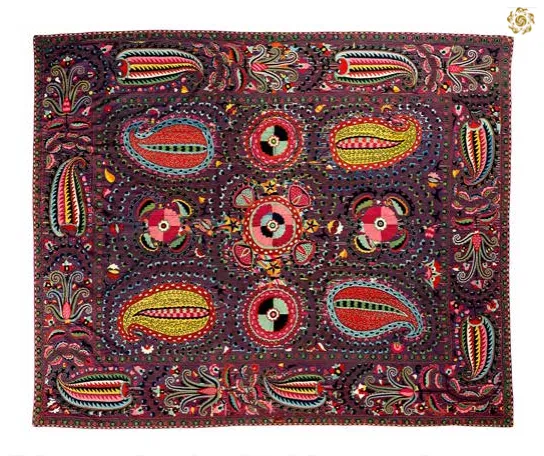Suzani are not just decorations; they carry symbolism and significance. Each embroidery is created with love and attention to detail, often using bright colors and complex patterns that can convey specific meanings and emotions. These decorative items were used not only to decorate interiors, but also as part of the bride's dowry, which emphasizes their importance in wedding rituals.
The process of creating embroidery unites women of different generations. It is not only a creative activity, but also a form of passing on knowledge and traditions from mother to daughter. Embroidery becomes a kind of ritual that strengthens family ties and preserves cultural heritage.
Each region of Uzbekistan has its own unique styles and techniques of embroidery. Bukhara, Gijduvan, Samarkand and other cities are famous for their characteristic ornaments and techniques that reflect local traditions and features. These diverse styles create a rich palette of Uzbek embroidery art, which continues to evolve and attract the attention of both locals and tourists.
Thus, the art of embroidery in Uzbekistan not only preserves traditions, but also serves as an important element of the cultural identity of the people, linking the past with the present.
You can read more about the topic in the book-album "Cultural Heritage of Uzbekistan. Collection of the Russian Ethnographic Museum".
The main sponsor of the project is the oilfield services company Eriell-Group.

